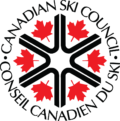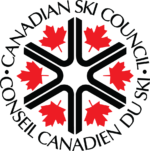What to Wear
Comfort Factor
Canadians are weather watchers and they seldom make their decisions on outdoor activities without consulting a forecast. The public perception of outdoor winter recreation opportunities is governed by extensive media coverage of weather including wind chill. The use of weather forecasts has prompted the Ontario Snow Resorts Association, one of the Canadian Ski Council’s member associations, to create a scale that will enable the public to accurately reflect the level of comfort they may expect while engaged in winter recreation.
This scale has been named the Comfort Factor and specifically relates wind chill to a set of parameters the public can use to enable them to enjoy winter activities.
|
COMFORT FACTOR |
WIND CHILL EQUIVALENT |
TEMP & WIND COMBINATIONS |
COMFORT REQUIREMENTS |
| 1. Very comfortable outdoor winter conditions. | +4 | +10C and 20K to +5 and 10k |
Comfortable activity maintained with light winter clothing. Insulated clothing not required. |
| 2. Comfortable outdoor conditions with adequate insulated clothing | -12 | +4C and 60K to -9C and 10K |
Adequate insulating, dry clothing required to maintain core temperatures above +36C must be provided |
| 3. Comfortable outdoor conditions require activity and quality outdoor clothing | -20 to -25 |
-3C and 55K to -18C and 10K |
Keep active. Well made insulating, dry clothing a necessity. Clothing featuring layering a good recommendation. a hat is necessity. |
| 4. Shortened outdoor activity with warm-up breaks. Cover all skin. | -25 to -50 |
-6C and 60Kto -22C and 10K |
Freezing of exposed skin can begin for most people depending on degree of activity and amount of sunshine. Cover all skin areas. Keep active and take frequent warm-up breaks. |
| 5. Outdoor activity to be kept to a minimum | -50 to -67 |
-23C and 60K to -40 and 10K |
Conditions for outdoor activity become dangerous. Exposed skin freezes in less than one minute at -50C |
Content courtesy of Ontario Snow Resorts Association
WHAT YOU’LL NEED TO HIT THE SLOPES
Dress for the day, but don’t forget that you’ll likely be in the snow at least once…
- Warm and water resistant gloves or mitts
- Layers that can be added or removed as you heat up or if the weather changes.
- A base layer
- A toque and neck warmer
- Waterproof pants and jacket
- Helmet and goggles
- Sunscreen and shades
Content Courtesy of Canadian Association of Snowboard Instructors
[button link=”https://www.skicanada.org/set/”]Back[/fusion_button]


